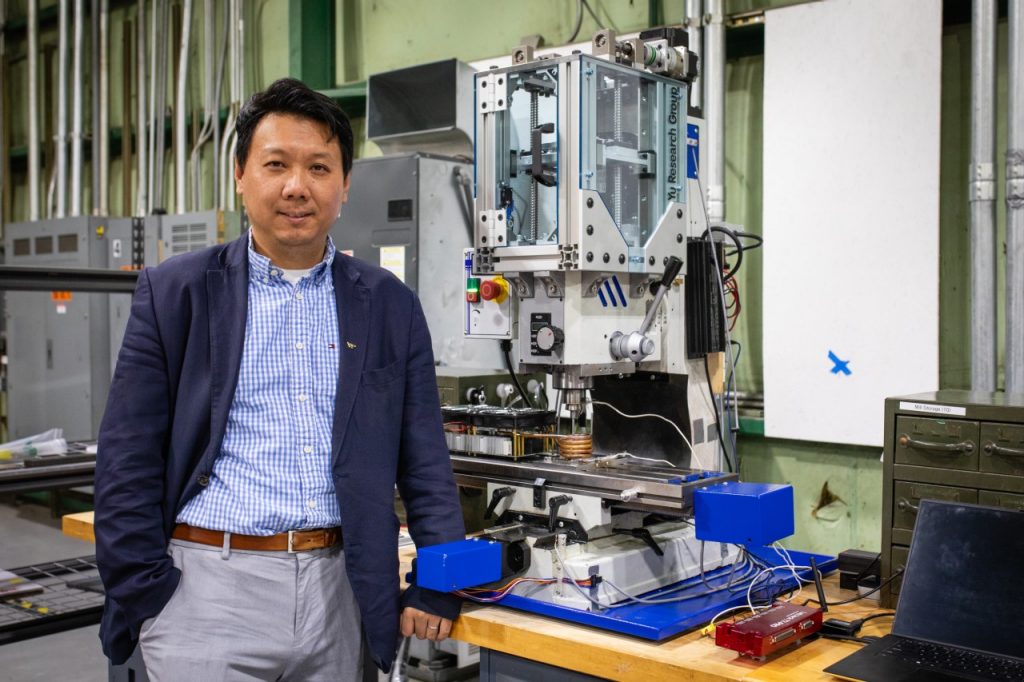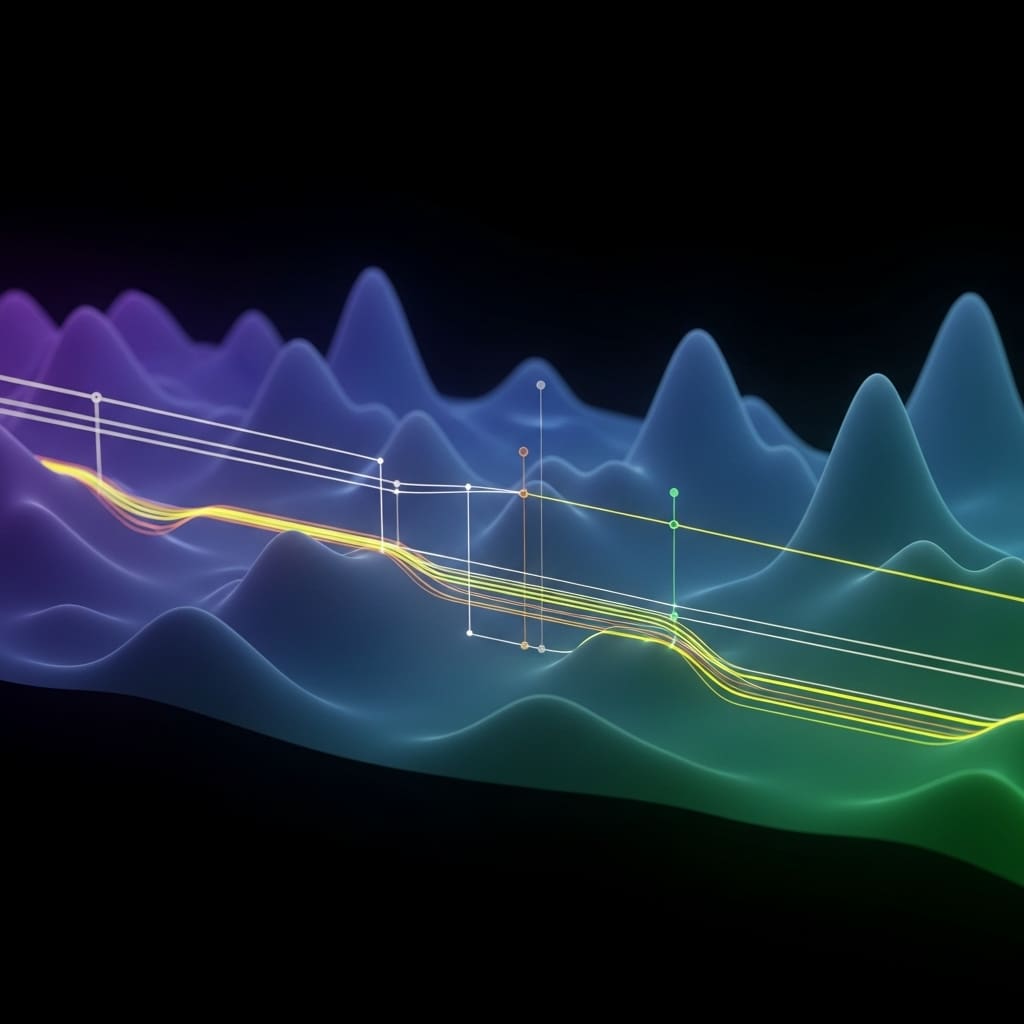Nonadiabatic molecular dynamics plays a crucial role in understanding the complex processes that govern photochemical and photophysical phenomena, and surface hopping methods represent a widely adopted approach within this field. Jakub…
Blog
-

Lopes’ 1st in-season MW honor goes to Henley
After a career night led him to a career milestone in a career season, Grand Canyon senior Jaden Henley added to the distinctions Tuesday when he was named the program’s first Mountain West Player of the Week winner.Henley, a 6-foot-7 guard from…
Continue Reading
-

Port of Oakland Moves 174,239 TEUs in November as Exports Increase
Agricultural and refrigerated exports post gains while overall volumes reflect seasonal and market adjustments
Oakland, Calif. – Dec. 23, 2025: The Port of Oakland handled 174,239 twenty-foot containers (TEUs) in November 2025, reflecting a 4.1% year-over-year decline and a 4.7% decrease from October, as cargo volumes reflected typical seasonal slowing and continued adjustments in global shipping patterns.
Loaded cargo remained steady, supported by strengthening exports. Loaded exports totaled 68,824 TEUs, up 3.3% year over year and 4.0% from October, reinforcing the Port of Oakland’s role as a leading U.S. gateway for agricultural commodities and the nation’s top port for refrigerated goods. Loaded imports reached 73,092 TEUs, down 9.3% year over year and 11.1% month over month, reflecting continued moderation in import demand.
“Export strength continues to be a key driver for Oakland,” said Port of Oakland Maritime Director Bryan Brandes. “Even as the market recalibrates, our exporters are moving goods consistently, and efficient terminal operations are supporting balanced cargo flows and reliable service for our customers.”
Combined loaded container volumes totaled 141,915 TEUs, down 3.6% year-over-year, while remaining relatively stable compared to October. Empty container volumes declined to 32,324 TEUs, down 6.4% year-over-year and 6.3% from the prior month, driven by carrier equipment repositioning rather than changes in loaded cargo demand.
Vessel calls totaled 76 in November, down 8.4% year over year and 11.6% from October, as carriers continued to deploy larger vessels and consolidate services. Fewer calls, paired with higher average cargo per vessel, helped sustain overall cargo throughput at the Port’s marine terminals.
Overall, November performance reflects the Port navigating shifting market conditions, with export strength and operational efficiency supporting consistent cargo flows amid shifting market conditions.
For more container statistics, visit: Port of Oakland Facts & Figures.
About the Port of Oakland
The Port of Oakland generates vital economic activity, community benefits, and environmental innovation as it decarbonizes its operations for a cleaner and greener future. Along with its partners, the Port supports more than 98,000 regional jobs and $174 billion in annual economic activity. The Port oversees the Oakland Airport (OAK), the Oakland Seaport, and nearly 20 miles of waterfront, including Jack London Square, and a publicly owned utility. The Port of Oakland is Everyone’s Port! Connect with the Port of Oakland and Oakland Airport through Facebook and Twitter or with the Port on LinkedIn, YouTube, and at www.portofoakland.com.Media Contacts
Matt Davis
Port of Oakland
Chief Public Engagement Officer
(510) 627-1430
[email protected]David DeWitt
Port of Oakland
Media/PR Specialist
(510) 627-1169
[email protected]Continue Reading
-

Section 16(a) Reporting Requirements for Foreign Private Issuers
Key takeaways:
- Effective March 18, 2026, directors and officers of foreign private issuers (FPIs) become subject to the reporting obligations of Section 16(a) of the Securities Exchange Act of 1934.
- Beneficial owners of more than 10% of the FPI’s stock remain exempt from Sec. 16(a) reporting.
- The SEC has authority to exempt FPI insiders from Sec. 16(a) reporting if the foreign law imposes substantially similar obligations.
On December 18, 2025, S. 1071, the National Defense Authorization Act for Fiscal Year 2026 (NDAA), was signed into law. Within the NDAA is the Holding Foreign Insiders Accountable Act (HFIAA). The HFIAA amends Section 16(a) of the Securities Exchange Act of 1934 so that the reporting obligations of Sec. 16(a) will now apply to the directors and officers of foreign private issuers (FPIs). The amendments to Sec. 16(a) go into effect on March 18, 2026.
What foreign private issuers need to know
Below is a summary of what FPIs and their legal advisers need to know about the extension of Sec.16(a) to FPI directors and officers:
- Sec. 16(a) requires certain insiders to report purchases, sales, and holdings of their company’s securities by filing Forms 3, 4, and 5 with the SEC. Prior to the enactment of the HFIAA, Sec. 16(a) only applied to the insiders of domestic public companies; the insiders of FPIs were not required to make the Sec. 16(a) filings.
- Sec. 16(a), as amended by the HFIAA, extends the Sec. 16(a) reporting obligations to every person who is a director or officer of a foreign private issuer.
- In the case of domestic public companies, the owners of more than 10% of the company’s stock also are required to make the 16(a) filings. However, the beneficial owners of more than 10% of an FPI’s stock are not required to file Forms 3, 4, and 5.
- Sec. 16(a) reporting consists of the following:
- Form 3: Filed by an insider subject to Sec. 16(a) reporting to initially disclose their ownership in their company’s securities. Form 3 is filed within 10 days after the person becomes an insider subject to Sec. 16(a) reporting or, in the case of an IPO, when the IPO becomes effective.
- Form 4: Filed to report changes in their ownership of the company’s stock that they reported on Form 3. Form 4 must be filed within 2 business days following the transaction that resulted in the change.
- Form 5: Filed when at least one transaction was not reported during the year due to an exemption or failure to report previously. Form 5 is due no later than 45 days after the company’s fiscal year ends.
- Forms 3, 4, and 5 must filed electronically through the SEC’s EDGAR system and must be in English.
- The SEC has authority to exempt any person, security or transaction, or any class or classes of persons, securities, or transactions, from having to make the filings of Sec. 16(a) if the SEC determines that the laws of the foreign jurisdiction apply substantially similar requirements to that person, security, or transaction.
- The HFIAA does not amend Sec. 16(b) (requiring disgorgement of short swing profits) or Sec. 16(c) (prohibiting short sales of the company’s stock). Therefore, insiders of FPIs (directors, officers, and over 10% beneficial owners) are not subject to those subsections.
- A failure to make a timely filing is a violation of the securities law, and the SEC has the authority to impose fines and other penalties.
- The amendments to Sec. 16(a) are effective March 18, 2026.
Next steps
FPIs should begin preparing for the effective date of March 18, 2026, including by determining which directors and officers will be required to file the Sec. 16(a) reports, obtaining proper EDGAR credentials, and in general preparing to assist their directors and officers with the filing of the required reports.
Learn more
If you have questions or need assistance, please contact us for expert guidance.Continue Reading
-
China & Taiwan Update, December 23, 2025 – Institute for the Study of War
- China & Taiwan Update, December 23, 2025 Institute for the Study of War
- US announces massive package of arms sales to Taiwan valued at more than $10 billion, angering China AP News
- BlockWaveInsider(@Anfaal_khan)’s insights Binance
- Ending…
Continue Reading
-

PSAC releases Fall 2025 Academic All-Conference Teams
LOCK HAVEN, Pa. – For the first time, the Pennsylvania State Athletic Conference released its Fall 2025…
Continue Reading
-

Barriers and Facilitators to Home-Based Pulmonary Rehabilitation in COPD
Adherence to home-based pulmonary rehabilitation (HBPR) remains inconsistent among people with chronic obstructive pulmonary disease (COPD), and new evidence published in BMC Nursing suggests that a complex mix of patient-, provider-, and…
Continue Reading
-

A researcher’s long quest leads to a smart composite breakthrough | Virginia Tech News
The new approach embeds tiny shape-memory ceramic particles into metal, “like putting chocolate chips into cookie dough,” Yu said. The mixture is then fed into an additive friction stir deposition machine, an advanced manufacturing tool that…
Continue Reading
-

Study supports de-escalation of broad-spectrum antibiotics in certain sepsis patients
New research suggests that de-escalating patients with community-onset sepsis but no indication of a multidrug-resistant organism (MDRO) from broad-spectrum antibiotic therapy is safe and appropriate.
In a study conducted at 67 hospitals in…
Continue Reading
-
Office for Health Data, Outcomes, and Engagement Strategy (HDOES) | Mount Sinai
The Office for Health Data, Outcomes, and Engagement Strategy (HDOES) aims to promote health equity and fair opportunities for both our patients and within the culture of the Mount Sinai Health System (MSHS).
Our Mission
To support the Mount Sinai Health System to advance and uphold health equity, promote cultural awareness, and establish best practices, policies, and procedures which reduce harm and create fair opportunities for all.
Our Vision
To foster a culture that embraces innovative thinking, emphasizes fairness, and empowers and uplifts the many communities we serve to allow all to thrive.
What We Do
- We serve as consultants and subject matter experts to teams across the organization.
- We provide education, tools, and resources to utilize data-informed strategies to identify opportunities to eliminate barriers, enhance health care outcomes, and strengthen the financial status of the health system.
- We engage with faculty, staff, and students to encourage and facilitate brave conversations to promote a culture of fairness and well-being.
Special Initiatives
Community Outreach Event Hub (COEH)
The COEH serves as a platform to understand and evaluate the Mount Sinai Health System’s community outreach initiatives. The information we gather through the COEH allows the Health System to advance community health and health equity by leveraging opportunities to address the needs of the communities we serve and build an extensive network of resources. We encourage all faculty, staff, and trainees who coordinate community events to visit the Hub and learn more so you can contribute to our ongoing efforts. To learn more or to access the COEH, email Community.Tracker@mountsinai.org.
Health Equity Data Assessment (HEDA) Hub
The Health Equity Data Assessment Hub serves as Mount Sinai’s systemwide source for equity-focused data, analytics, research, and interventions. Through the HEDA Hub, we share insights, best practices, and opportunities to strengthen equity across clinical outcomes, patient care, workforce experience, and community engagement. HEDA committee members support leaders and teams in applying an equity lens to data collection, analysis, and decision-making—empowering our Health System to advance high-quality, equitable care for all patients and communities we serve. To learn more or to access the HEDA Hub, email HEDA@mountsinai.org.
Let’s Connect
Let’s Connect sessions are a platform for engaging discussions and events hosted by The Office for Health Data, Outcomes, and Engagement Strategy (also referred to as HealthDOES or HDOES), site engagement councils, and Employee Resource Groups (ERGs). These sessions cover a wide range of topics to foster health equity through connection, collaboration, and learning across our Health System. For questions on upcoming events or to join our list serv, email Lets.Connect@mountsinai.org.
Ways to Get Involved
We encourage faculty, staff, trainees, and students to engage and participate in our efforts in the following ways:
Contact HealthDOES@mountsinai.org for more information or to get involved. All are welcome.
Continue Reading
